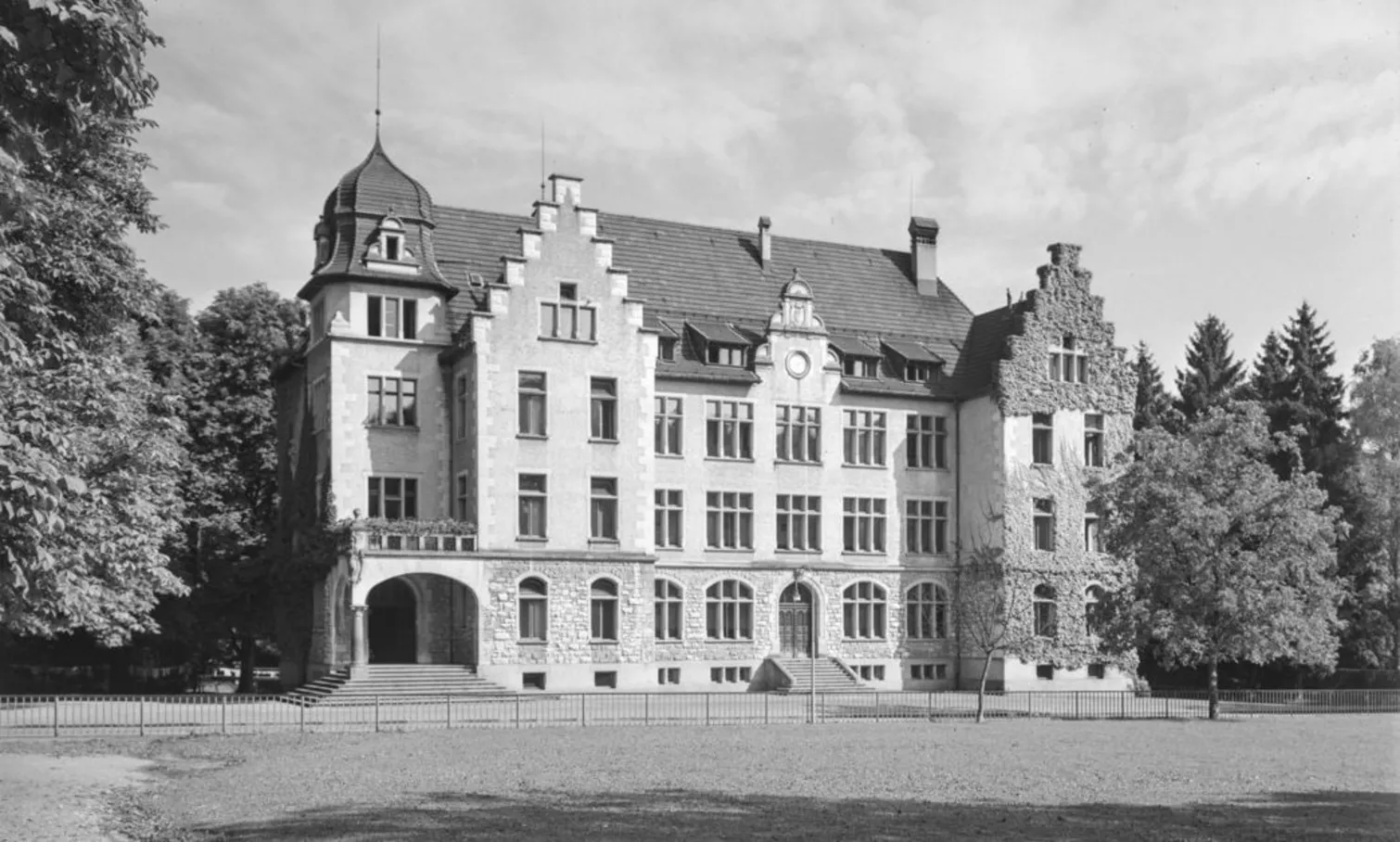Baden Primary School – Ländli Day School
Natural ventilation strategies and night-time cooling ensure Minergie quality in the school building
The municipally protected building at Ländliweg, built in 1903, is used as a day school for around 120 pupils from years 1 to 6. As the technical installations had reached the end of their service life, the school is being renovated and certified to the Minergie standard. The main challenge was to ensure high air quality and thermal comfort with a deliberately simple low-tech approach.
A thermodynamic simulation investigated how to guarantee long-term indoor air quality (CO₂) in classrooms and group rooms without compromising comfort, while minimising winter heat losses and summer heat gains. It also examined the optimal control strategy and the effectiveness of night-time cooling.
The resulting low-tech concept combines manual airing during breaks with a multi-level, demand- and temperature-adaptive automated window ventilation system, complemented in summer by fan-assisted night cooling to activate the building’s thermal mass. The system ensures excellent air quality and thermal comfort with minimal switching cycles. Even on hot days, classrooms remain up to 4 K cooler than outside air, meeting Minergie’s indoor climate requirements.
Added value
- Summer thermal protection certificate for building permit and Minergie certification
- Annual room climate simulation with CO₂ and comfort analysis
- Optimisation of automated ventilation and night cooling strategies
- Clear operational rules for ventilation modes, angles, cycles and night cooling
Services
- Summer thermal protection certificate
Based on the thermodynamic simulation, the solar protection factor was determined, serving as the basis for selecting the appropriate shading model. This certificate is also required for the building permit and Minergie certification. - School use in focus
The number of occupants, occupancy times and break periods were key inputs for the simulation and decisive for the quality of the results. - Low-tech challenge
In winter, heat losses and draughts had to be avoided; in summer, overheating was prevented while keeping CO₂ levels low. In addition, window ventilation switching cycles had to be minimised to avoid disrupting lessons. - Night cooling and activation of thermal mass
The 1903 building is constructed from solid rubble masonry. Its high thermal mass is ideally suited for night cooling, allowing the components to act as cold storage and ensuring pleasant indoor temperatures even in midsummer. - Air quality – CO₂ concentration
With manual airing during breaks and support from the automated window ventilation, CO₂ targets were reliably met – except for a few summer hours. This promotes pupils’ concentration and performance. - Thermal comfort in winter and summer
The tilt position of the automated windows adapts to the outside temperature, allowing fresh air in winter without lowering room temperature excessively. In summer, only occasional exceedances occur, keeping total overheating hours below 100 per year.
Client
- Stadt Baden, Bau, 5401 Baden
Architect
- Liechti Graf Zumsteg Architekten ETH SIA BSA AG
Processing period
- 2025 - 2025
Services
- Building environmental control, Simulation
- Heating, ventilation, air-conditioning and refrigeration

